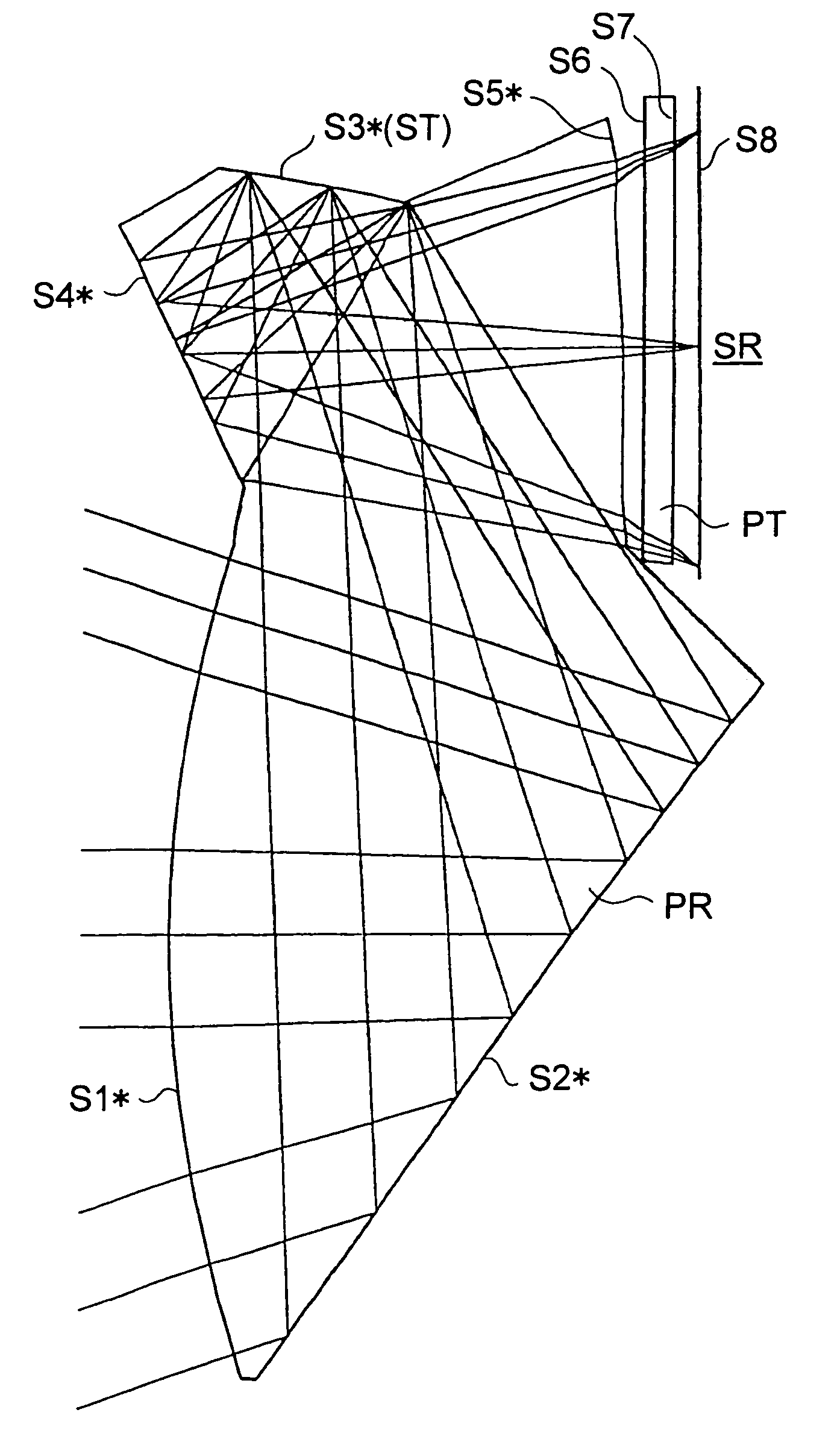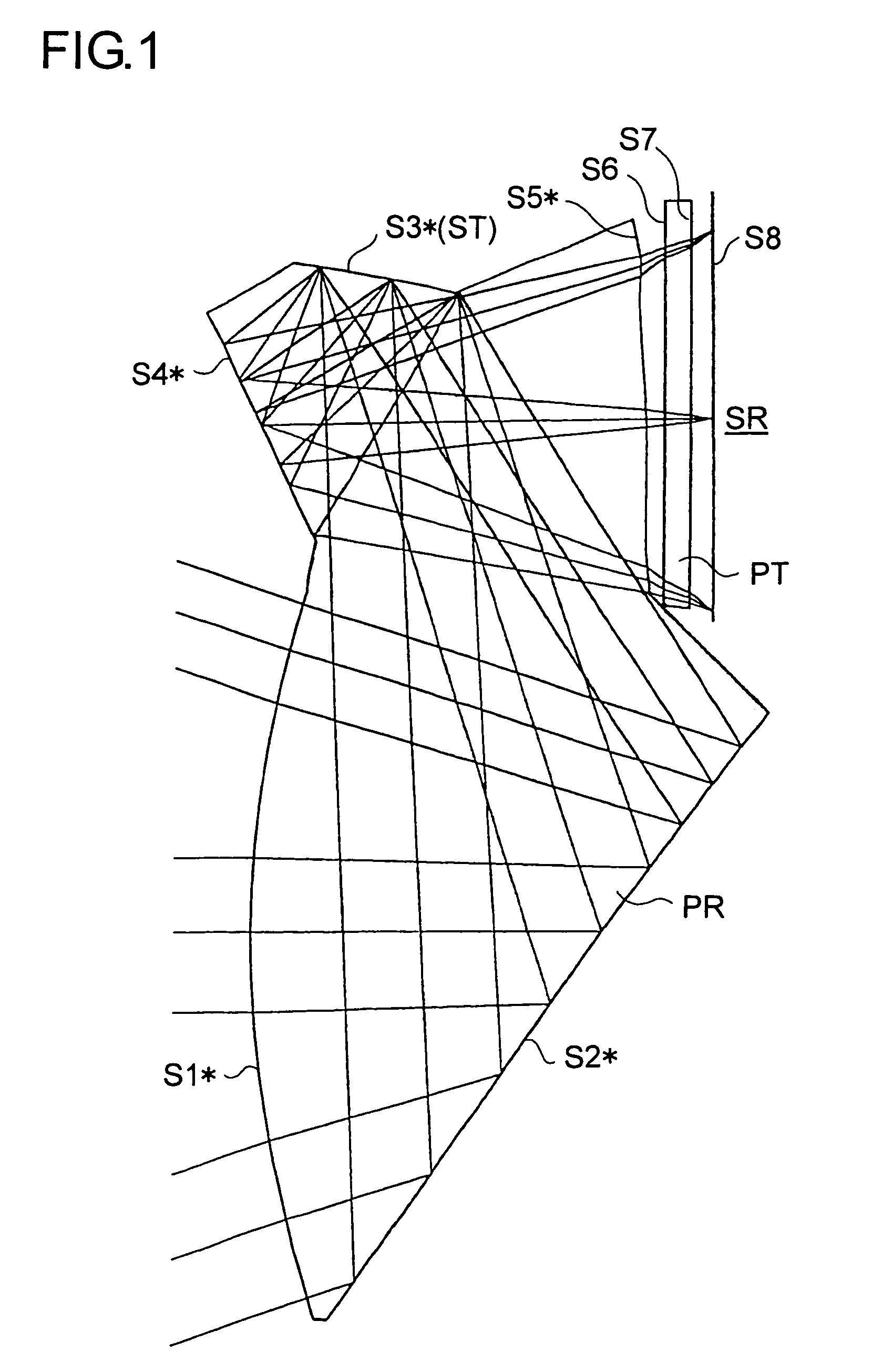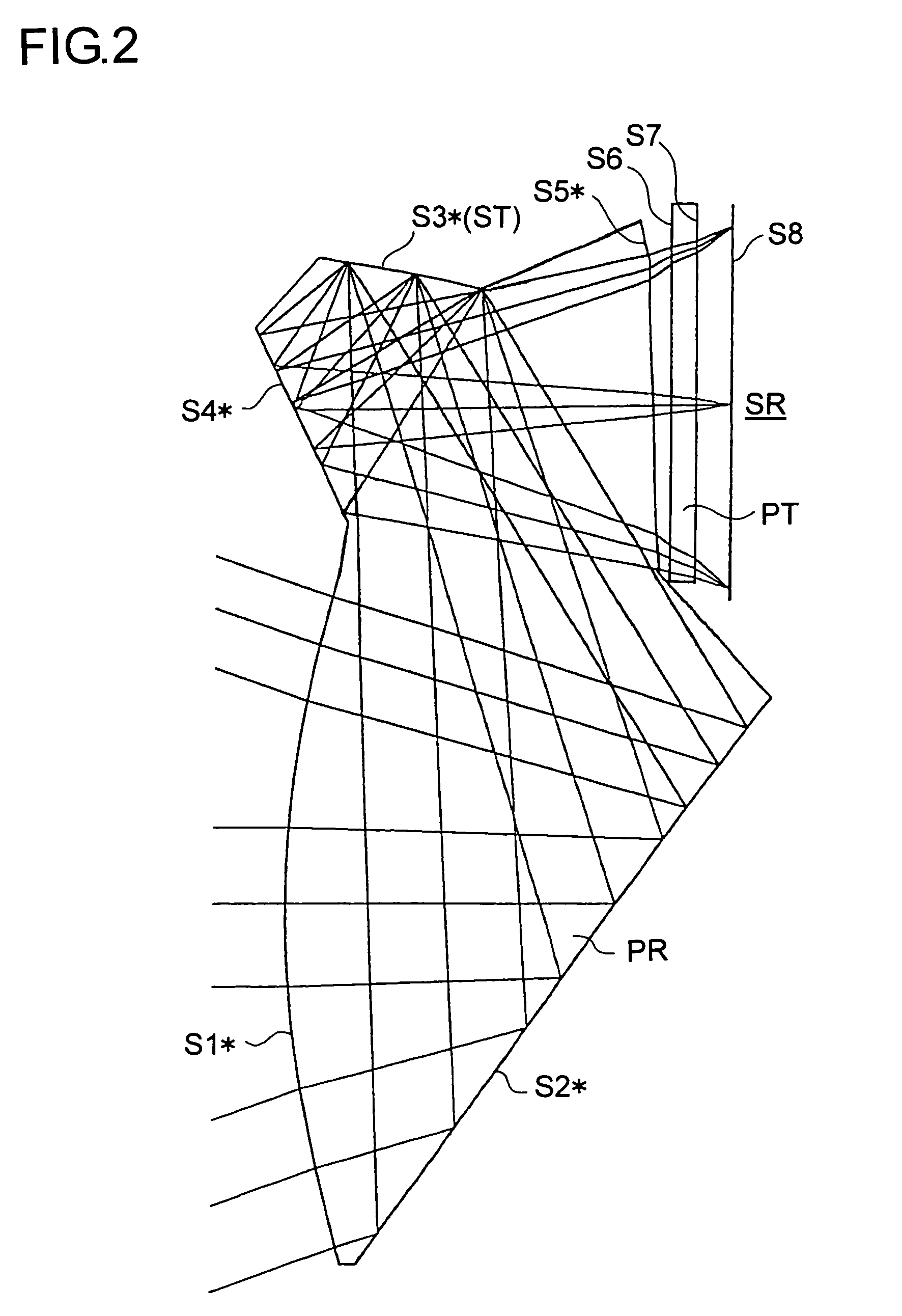Taking optical system
an optical system and optical system technology, applied in the field of taking optical systems, can solve the problems of increasing the number of lens elements and the total length, increasing the cost, and increasing the number of components, and achieves the effects of slim and compact, wide angle of view, and high definition
- Summary
- Abstract
- Description
- Claims
- Application Information
AI Technical Summary
Benefits of technology
Problems solved by technology
Method used
Image
Examples
examples
[0464]Hereinafter, numerical examples of taking optical systems embodying the present invention will be presented with reference to their construction data and other data. Examples 1 to 3 presented below are numerical examples corresponding to the first to third embodiments, respectively, described above. Thus, the optical path diagrams (FIGS. 1 to 3) showing the first to third embodiments also show the optical constructions and other features of Examples 1 to 3, respectively.
[0465]Tables 1 to 3, Tables 4 to 6, and Tables 7 to 9 show the construction data of Examples 1 to 3, respectively. In the basic construction data shown in Tables 1, 4, and 7 (where i represents the surface number), Si (i=1, 2, 3, . . . ) represents the i-th surface as counted from the object side, ri (i=1, 2, 3, . . . ) represents the radius of curvature (mm) of the surface Si, and Ni and vi represent the refractive index (Nd) for the d-line and the Abbe number (vd) of the optical material filling the axial dis...
PUM
 Login to View More
Login to View More Abstract
Description
Claims
Application Information
 Login to View More
Login to View More - R&D
- Intellectual Property
- Life Sciences
- Materials
- Tech Scout
- Unparalleled Data Quality
- Higher Quality Content
- 60% Fewer Hallucinations
Browse by: Latest US Patents, China's latest patents, Technical Efficacy Thesaurus, Application Domain, Technology Topic, Popular Technical Reports.
© 2025 PatSnap. All rights reserved.Legal|Privacy policy|Modern Slavery Act Transparency Statement|Sitemap|About US| Contact US: help@patsnap.com



